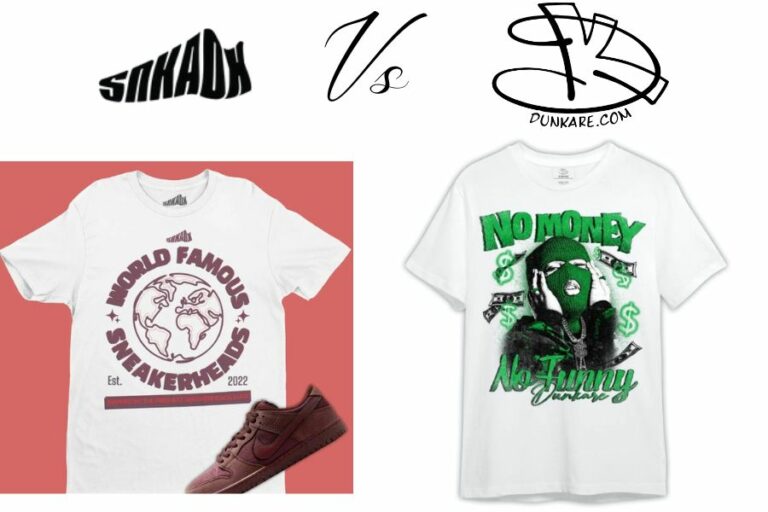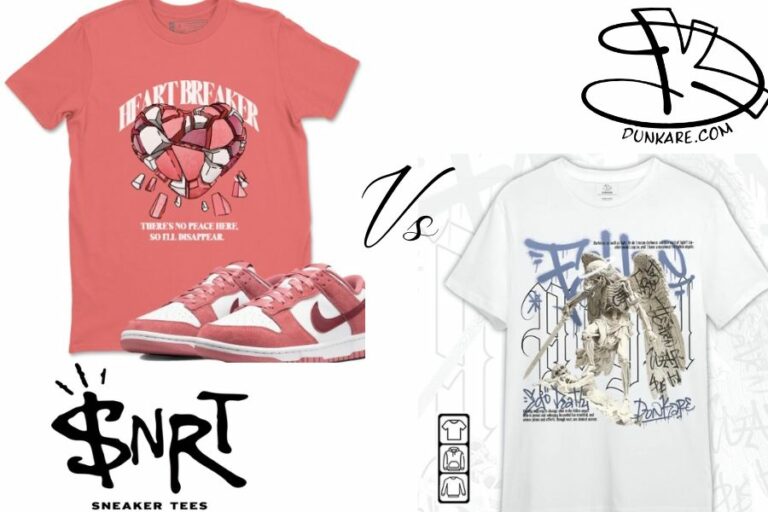What Does OG Mean In Shoes? Detailed Comparison To Retro
Whenever you type the OG on the Google search bar, “Original Gangster” will first pop up. But does that actually mean, and is it important? “OG” in shoes refers to “Original” or “Original Release.” It indicates the first release of a shoe model, emphasizing its authenticity and classic design. Often used in sneaker culture, “OG” denotes a product’s original version before subsequent redesigns or updates.
These two letters are simple enough but once you take your first steps in the world of sneakers, you will understand how cherishing the meaning signifies! Our article will gladly deliver all relevant info.
What Does OG Mean In Shoes?
Understanding the “OG” in Sneakers
OG stands for “Original” and is a sneaker term we’re sure many of our readers are familiar with. While it used to stand for “Original Gangster,” nowadays, “OG” typically refers to a shoe’s first release, its iconic color design, or a genuine reproduction. These two shoe terminologies, though closely related, are not completely interchangeable.

As we’ve discovered, it’s essential to pay close attention to the surrounding context to differentiate what OG meaning shoes under different circumstances. Regarding original launches, OG signifies the initial themes of a shoe upon its very first release.
The Air Jordan Bred 1 is a prime example, being the inaugural model that led to a succession of new products released annually.
The Intricacies of OG Releases
However, OG means in shoes aren’t always superior in quality, given the various versions, upgrades, and changes that come later. Yet, the Jordan Bred 1 OG stands out as the best-selling model of this brand, establishing a Bred (Black+Red) tradition in many other sought-after models of Air Jordans og meaning.
Importantly, as we pointed out earlier, OG doesn’t always symbolize the original color or design themes. At times, it merely denotes a shoe’s initial launch. Reproductions and re-releases of the same models afterward aren’t labeled as OG.
For many collectors, owning OG meaning in shoes versions of their beloved brands or models is the ultimate dream, which explains the staggering price tags we often spot on Original sneakers, especially those from Jordans.
Why Are Original Shoes So Special?
Special meaning
There is always something special and alluring about the “first.” Numerous people can achieve (or even exceed) that record, but “the first” milestone is always irreplaceable. The same thing is for Original shoes!
These sneakers might not be perfect in terms of functions or designs, but they set the very first stones for a thriving sneaker line that develops later on – the starting point of everything. Everyone tend to get their hands on meaningful items. Suppose you are a hardcore fan of Air Jordans; surely purchasing the Original sneakers that set the success path for your fav brand is a great idea.
Read more: What Does SE Mean In Shoes? Sneakerheads Must Know
Rarity
Aside from that, rarity also plays a part in collecting. Since these sneakers are old models, not everyone can access them freely, which makes them all the more unique and desirable. As a collector, you must feel a surge of delight upon becoming one of the only 10,000 people in the world to possess a super rare Original set.
Why are “OG” and “Retro” Releases Important to Sneaker Enthusiasts?
In the world of sneakers, few terms carry as much weight and significance as “OG” and “Retro.” But why are these terms so pivotal for sneaker enthusiasts like us? Let’s dive deep into the allure of these releases and explore their importance.
Nostalgia and Sentimentality
Retro releases play heavily on nostalgia. Remember the iconic Air Jordan 1s from 1985? Or the Adidas Superstar classics? These models transport us back in time, evoking memories of past eras. We believe that wearing retro sneakers isn’t just a fashion statement; it’s a nod to the past, an homage to iconic moments in sneaker culture.
| Feature | OG | Retro |
| Release Timing | First release of the model | Subsequent re-releases |
| Design Authenticity | Original design | Can have minor tweaks |
| Collector’s Value | High due to rarity | High due to nostalgia |
The Collector’s Perspective
From our experience, sneaker collecting isn’t just a hobby—it’s a passion. And within the collector’s realm, OG and retro releases are often seen as the crown jewels. Their limited availability and the stories they carry increase their value, both monetarily and sentimentally. For us, and many in the sneaker community, these releases are more than just shoes; they’re investments, art pieces, and historical markers.
The Hype and Exclusivity
Let’s not forget the hype! The anticipation around OG and retro releases often leads to long lines, raffles, and even camping outside stores. The exclusivity associated with these releases creates a buzz that’s hard to match. And we’ve observed that this hype doesn’t just boost sales; it strengthens the community bond, bringing sneaker enthusiasts together in shared excitement.
How Can You Identify an “OG” Shoe vs. a “Retro” Shoe?
The sneaker world is vast, and with every release, the lines between “OG” and “Retro” can sometimes blur. As dedicated sneaker enthusiasts, we’ve often found ourselves in the midst of heated debates on this very topic. So, how can you, as a discerning sneaker aficionado, identify an “OG” from a “Retro”? Let’s delve into the key markers and indications to watch out for.
The Release Date: A Time Stamp
The most straightforward indicator is the release date. “OG” stands for “Original,” denoting the first release of a specific shoe model. If you’re looking at a pair from the inaugural launch, you’re holding an OG. On the other hand, Retro releases are re-releases of these original models, often introduced years later. For instance, if you come across an Air Jordan 1 from 1985, that’s an OG. But if it’s a 2015 release with the same design? That’s a Retro.
Packaging and Branding: A Sneaker’s First Impression
Brands, understanding the significance of OG and Retro releases, often differentiate them through packaging. The box design, color scheme, and even the branding might differ. We’ve noticed that OG releases sometimes come with unique packaging elements that aren’t replicated in later Retro releases.
| Element | OG | Retro |
| Box Color | Original color scheme | Updated or variant colors |
| Branding | Classic logos | Modern or variant logos |
| Additional Items | Commemorative cards/tokens | Standard inserts |
Design Details: The Devil’s in the Details
While Retro releases aim to stay true to the OG, there might be minor tweaks in design, material, or color placements. We recommend closely examining the shoe’s stitching, logo placements, and even the insole designs. Sometimes, the difference is as subtle as a slight variation in the shade of color or the texture of the material.
Often overlooked, but the labels and price tags can be a treasure trove of information. They might have release dates or specific codes that indicate whether the shoe is an OG or a Retro. We’ve often found ourselves diving deep into sneaker forums, comparing these codes to ascertain a shoe’s true identity.
Some Popular Original Sneakers? The Two You Must Know
Air Jordan One
Even non-sneaker enthusiasts know about Air Jordan One – the sneakers that started it all! Introduced in 1985, they were a close ally of Michael Jordan during his NBA rookie seasons.
As one of the earliest designs, these shoes were simple, lacking all the sophisticated features for which Jordan is recognized. Nevertheless, with such a rich history, we are not surprised that people are still crazy over them even to this day!
Nike Men’s Challenger
Nike Challenger is obviously inferior to Air Jordan One when it comes to history and origin (not every shoe brand has the chance to grace Michael Jordan’s feet, after all).
Nonetheless, their sleek, springy, and soft feel make these sneakers pretty popular – a great choice for hardcore runners. The varied-width lacing system is another bonus, ensuring a snug and personalized fit for users of all ages and sizes.
Read more: What Does UA Mean In Shoes? Authenticity Revelations
Conclusion
Navigating the intricate world of sneaker terminology can be a thrilling journey. As we’ve delved deep into the realm of “OG” and “Retro” in shoes, we’ve come to appreciate the rich history and significance these terms hold in the sneaker community. “OG”, standing for “Original”, is a testament to a shoe’s pioneering design and its foundational role in shaping sneaker culture. On the flip side, “Retro” releases, while echoing the designs of their OG counterparts, capture the essence of nostalgia and the ever-evolving nature of fashion trends.
For more classic shoes through time, take a look at this video:









